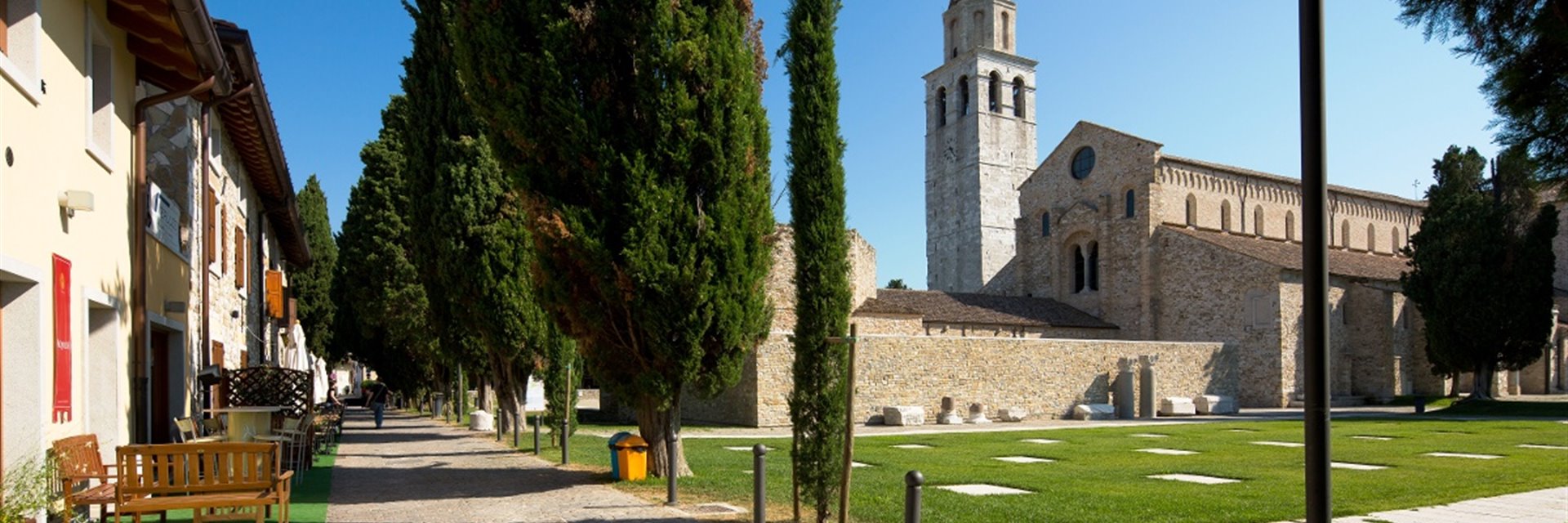Aquileia
Colonized in 181 B.C. in "agro gallorum", Aquileia was born as a bridgehead for the Roman conquest of the Danube areas and with the aim of defending the eastern borders to enhance the already flourishing trade between the eastern Mediterranean basin and the transalpine countries.
The excavations have brought to light the remains of the Roman forum and of a basilica, of the burial ground, of mosaic floors and house foundations (Cal and ex Cossar estates), of statues of the Via Sacra (Sacred Road), of the markets, of walls, of the river port, of a large mausoleum and much more.
The wonderful Basilica of Santa Maria Assunta, which overlooks the historic Piazza Capitolo, was built over a fourth-century building, which in the following centuries was subjected to several extensions (mostly destroyed during the barbarian invasions). In the temple one can admire the famous early Christian mosaics (4th century) which are a milestone in the history of Italian art.
The imposing Bell Tower of the Basilica, built around the year 1000 as a lookout tower, with its 73 metres not only creates a solemn scenery, but also provides the possibility to enjoy a breathtaking view.
Of great relevance are the ninth-century frescoes of the crypt.
The Crypt of the Excavations, with the beautiful mosaics of the church built in the 4th century by Bishop Theodore on the structures of an ancient Roman villa, is also important to discover the history of the Christian Aquileia of the first centuries.
Whether in sunny or rainy weather, it is worth visiting the National Archaeological Museum of Villa Cassis, considered one of the main archaeological museums in Northern Italy with finds coming from Aquileia or from the surroundings.
The productions of engraved gems, glass items and ambers, as well as mosaic floors and the rich epigraphic and lapidary treasure are noteworthy.
Do not miss a visit to the Early Christian Museum (open Thursday and Sunday morning from 08:45am to 01:45pm) ue to restoration works):situated in the hamlet of Monastero, it displays a rich collection of "tituli" (titles) in Greek and Latin, over 130 inscriptions and other early Christian and early medieval finds. From two large terraces it is also possible to admire the rich mosaic floor.
Several events take place every year in Aquileia: among the tastiest ones, we would like to mention "A tavola con gli antichi romani" (Eating with the ancient Romans - end of summer/early autumn), which proposes dishes prepared according to ancient Roman recipes.
The FVG Card in Aquileia
With the FVG Card in Aquileia you can discover the beauties of this UNESCO World Heritage Site spending less!
You can choose the audio guide service or take part for free in the guided visits in three languages organized by TurismoFVG. The itineraries will allow you to explore the most significant archaeological sites of the ancient Roman colony discovering the remains of the decumanus of Aratria Galla, of the ancient Roman forum, of the river port and the large floor mosaic of the Early-Christian Basilica, the crypt of the Excavations and of the Frescoes inside the Basilica and the famous bell tower of Poppo, from which one can enjoy a wonderful view over Friuli's plain up to the lagoon.
If, on the other hand, you prefer a personalized tour, the card will allow you to visit the Crypts of the Basilica, the bell tower of Poppo and the Südhalle free of charge
E-mail: info@promoturismo.fvg.it
Udine - Grado

